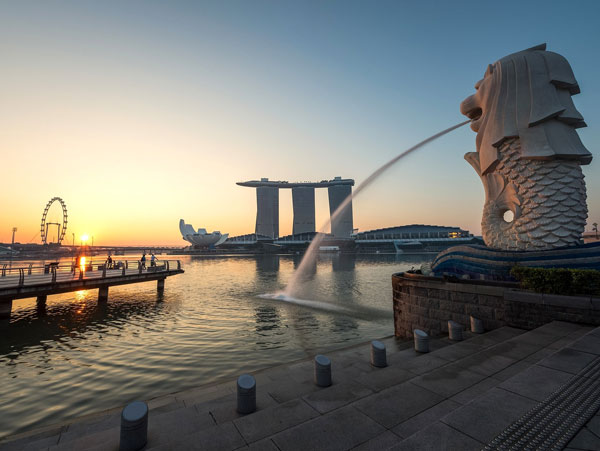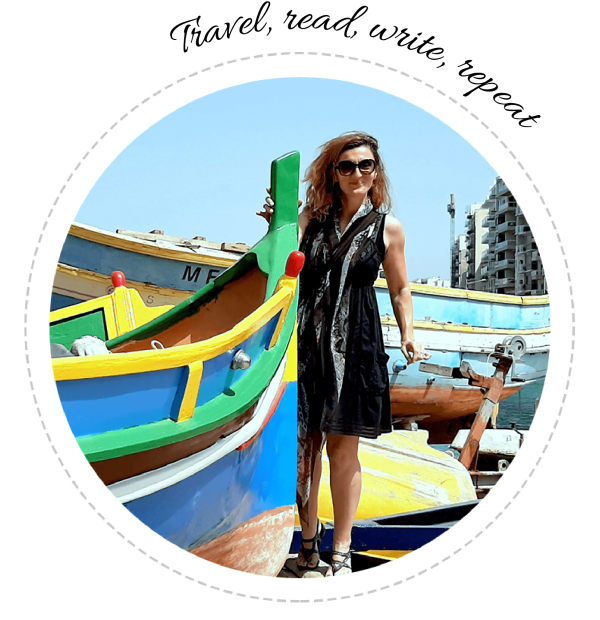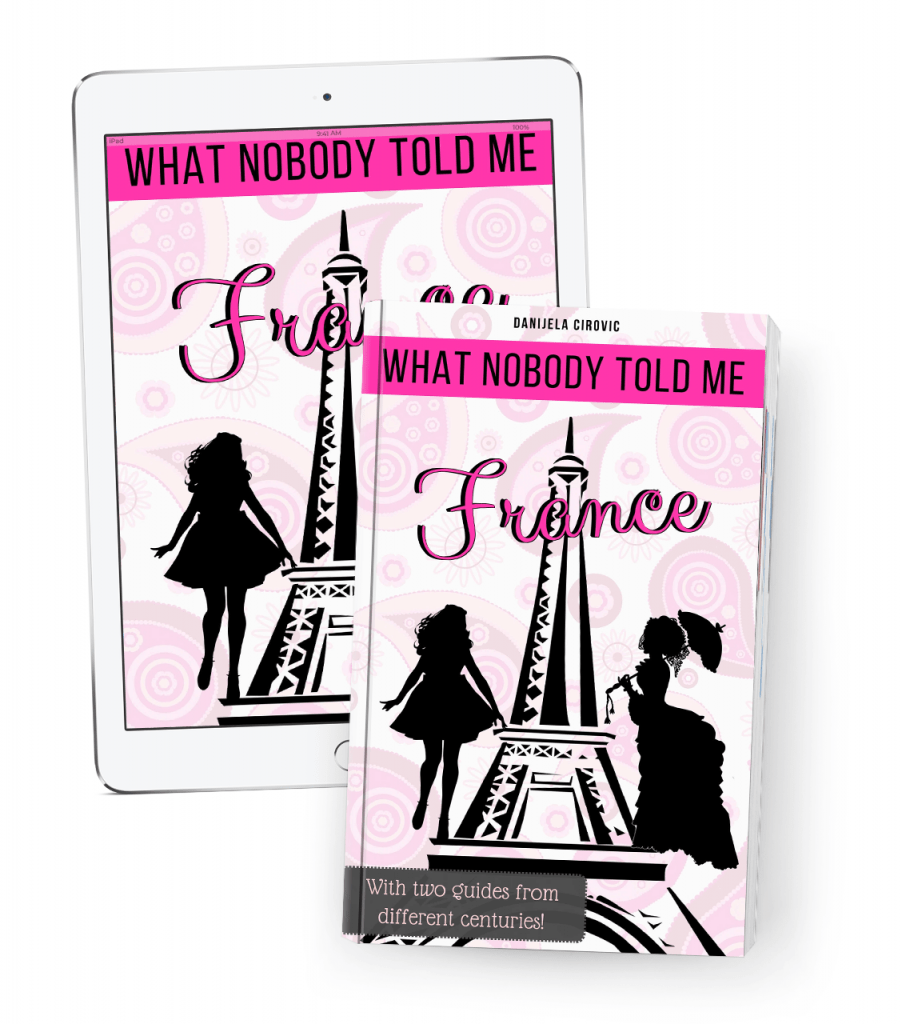
If you need a freelance travel writer or you would like to see your country, city, flight, etc., presented on the blog, drop me an email.
Find our more on Freelance Travel Writer page.
Once you get over those numerous fines and heavy rains we mentioned in the previous post on facts about Singapore, you will be eager to find out more about all the landmarks, especially Merlion Singapore.
This is an island country located on the southern tip of the Malay Peninsula. It lies 137 kilometers north of the Equator while the “gap” in between is occupied by the Indonesian islands. The country stretches for more than 700 square kilometers and it is one of a few true city-states in the world, home to the smallest nation in Southeast Asia.
Before the European settlement, the island we know today as Singapore was the site of a Malay fishing village at the mouth of the Singapore River. In 1819 the British East India Company established a trading post on the island which was used afterward as a strategic port along the spice route.
Singapore was to become one of the most important commercial and military centers of the British Empire, and the hub of British power in Southeast Asia. The city was occupied by the Japanese during WWII which Winston Churchill described as “Britain’s greatest defeat“.

After the war, in 1945, Singapore reverted to British rule. Eighteen years later, having established independence, it merged with Malaya, Sabah, and Sarawak to form Malaysia. But, less than two years later, a new state emerged in 1965 leaving the former federation.
Since then, the local economy has been on the rise. Foreign direct investment and a state-led drive to industrialization, a modern economy focused on electronics manufacturing, petrochemicals, tourism, and financial services, positioned the country among the wealthiest in the world.
The population is fewer than five million and though Singapore is highly cosmopolitan and diverse, ethnic Chinese form the majority of about 80 percent. The population is thus mainly Buddhist, while English is the official language.

The name of the city comes from Malay words singa (lion) and pura (city). According to legend, this name was given to the settlement by the 14th-century Sumatran prince Sang Nila Utama who, coming ashore after a thunderstorm, spotted a beast on the coast. His men identified the creature as a lion. Being astonished by the beauty of the beast and by the fact that it was friendly, just gazed at the prince and left in peace, Utama decided to name the island – the City of the Lion. Recent studies, however, show that lions have never inhabited the region, not even Asiatic lions, so the beast seen by Utama was more likely a tiger.

Being surrounded by water, people from Singapore took another symbol – a mermaid, which they merged with a lion in time. As a recognizable, one might even say mythological creature, Merlion Singapore (MERmaid-LION) is a well-known landmark of the city, the one you will find on every souvenir.
Merlion Singapore has the same significance for this island country as the Eiffel Tower for Paris, France. It is a true symbol of Singapore.
There is one imposing statue of Merlion Singapore in the famous Marina Bay, from where you will have a great view of the trade center full of modern skyscrapers. Another huge statue overlooking the whole of Singapore is located on the island of Sentosa, the nature resort.

The records show that the first settlements in Singapore were built in the 2nd century AD. The island was an outpost of the Sumatran empire and had the Javanese name of Temasek (Sea Town). It rapidly became an important trading settlement, but declined in the late 14th century.
It was part of the Sultanate of Johor between the 16th and 19th centuries. During the Malay-Portugal wars in the 17th century, the settlement was taken over by the Portuguese troops and then by the Dutch. Throughout centuries though, the island’s inhabitants were mostly fishermen.

In January 1819, Sir Thomas Stamford Raffles embarked on the main island. He immediately noticed its potential as a strategic geographical trading post in Southeast Asia and signed a treaty with Sultan Hussein Shah on behalf of the British East India Company to develop the southern part of Singapore as a British trading post.
The country was still controlled by a Malay ruler until 1824 when it officially became a British colony, giving the British full control. The city was flourishing and by 1869, 100,000 people lived on the island.
The early onset of town planning in colonial Singapore came largely through the framework of different ethnic groups settled in different parts of the city.

The river was largely a commercial area that was dominated by traders and bankers of various ethnic groups with mostly Chinese and Indian workers loading and unloading goods from traditional barges. The Malays were mostly fishermen and seafarers, who along with Arab traders and scholars settled in the southeast part of the river mouth. A small group of Europeans lived further upstream. Early Indian migrants also settled more inland of the Singapore River, where Little India stands today.
There was a major move by the post-independent Singapore government to resettle these residents in the late 1960s. All of the ethnic groups were moved into building blocks in their specific neighborhoods, which solved the problem of the homeless back then.
Next: KINGDOM OF SKYSCRAPERS (3)
The full Singapore SERIES
If you need a freelance travel writer or you would like to see your country, city, flight, etc., presented on the blog, drop me an email.
Find our more on Freelance Travel Writer page.
I am looking forward to working with you.




27 responses
I just went to Singapore! Never knew the history. Thanks for sharing!
Glad you like it, thanks! 🙂
Singapore is one destination I am looking forward to travel to soon. And Merlion is a must visit. There are so many attractions for my kiddo too
You can’t really miss Merlion, there are statues almost all around the city. And yes, a lot of activities for kids, especially on Sentosa island! 🙂
Singa ..and pura..are origin Indian which the Malay coppied …singa is lion in many Indian dialects and so is pura refer to city…
Hey, thanks Dass for clarifying that! Don’t speak the language, so I relied on guide books I’ve found in Singapore. 🙂
Interesting facts about a unique city I know little about! I hope to visit this fall though
Great, looking forward to your posts from the city! 😉
Hi. Great series. Did you find a good restaurant? We are in Singapore now
I remember I had some great Korean food, the best I’ve tasted thus far! But, it was years ago, don’t really remember the name of the place, and it probably changed a lot until now. Looking forward to hear about your impressions! 🙂
We went to Jumbo seafood at Riverside. A bit touristy, but the food was excellent. Lots of locals there too
Oh yes, you can’t go wrong with seafood by the river, mine was always fresh! 🙂
I just knew the meaning behind the name of the country and the fact that it was colonized by the British. Such an interesting history behind this beautiful country. Thanks for sharing!
Glad you like it, thanks for stopping by! 🙂
Absolutely fascinating story! I had seen the lion and mermaid symbol so many times but never really knew the story…your story makes the symbol of Singapore even more interesting. Looking forward to more such tales now 🙂
Hey, thank you for your kind words! So glad you like the series. 🙂
Singapore is definitely cosmopolitan. It has something for everyone. One of my favorite places 🙂
You’re so right, had so much fun there. 🙂
I enjoyed reading all this information about the history of Singapore. It seems like a fascinating place! I never knew the origin of the name before. And I had heard of the famous bar Raffles, but I didn’t know the story of the man. Singapore must be a place like no other.
It surely is worth a visit. There’ll be more about the Raffles Bar in one of the posts to come. 😉
All the pictures are amazing, the Merlion looks great with it has grandeur looks amazing. The Singapore skyline looks amazing. It looks peaceful with the water bodies and greenery around. Had a great time when we were there a couple of years ago.
So glad you like the photos, thanks! 🙂
I like the look of the Merlion! Much more creative than a mermaid 🙂
Hehehe, both mythical anyway, but this one seems a bit stronger I guess. 😉
Makes me want to go even more!
Hehehe, I can imagine! 🙂